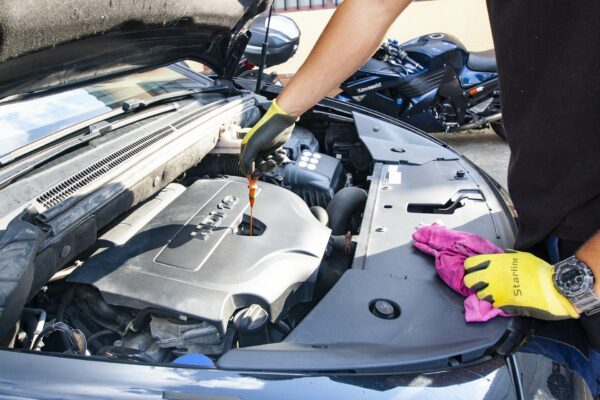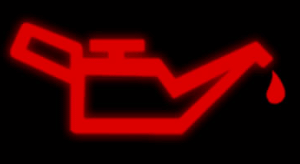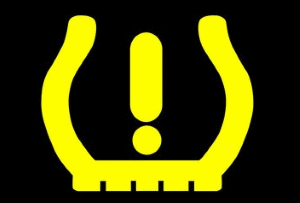If you’re like most people, you probably don’t think about car maintenance until there’s a problem. And by then, it’s often too late. In this article, we will go over six things that you need to know about car maintenance. This way, you can be proactive about taking care of your vehicle and avoid costly repairs down the road.

Change your battery
Low battery fluid levels shorten the life of your battery, but even with good care and attention, it’s only likely to last between 3-5 years. Your driving habits and the climate will also affect it. A dead battery is one of the most common reasons for a car to break down, so it’s important to keep yours in good condition. If you are changing your battery yourself, be sure to take safety precautions, such as wearing gloves and eye protection, and disconnecting the negative terminal first. However, if your key fob battery runs out, you might not even be able to get in your car. If you need to change your key fob battery, there’s an article at https://fobbattery.com/ that can help you. If you have any questions about changing your battery, consult a professional mechanic.
Get regular oil changes
One of the most important things you can do to keep your car running well is to get regular oil changes. Follow the recommendations in the owner’s manual as to how frequently to change the oil. Some vehicles running synthetic oil can go for 15,000 miles before a change, but most vehicles will need a change between 5000-10,000 miles. Keep track of how many miles you’ve driven since your last change by writing down the odometer reading.

If you’re not sure when you had your last oil change, or if it was done properly, there are a few things you can do to check. First, look for a sticker on the inside of your windscreen that has the date and mileage of your last oil change. If there is no sticker, open the bonnet and look for a dipstick with markings that show how much oil should be in the engine (typically between “min” and “max”). Fresh oil is typically a light brown or amber colour, while dirty oil is darker and may even be black. If you notice that your oil is dark, it’s probably time for a change. If the oil is below the minimum line, add enough to bring it up to somewhere between the minimum and maximum lines. If you’re out of oil entirely, that’s an emergency and you’ll need to add oil as soon as possible – you’ll probably see the oil light come on.

Check your tyre pressures
One of the most important things you can do to maintain your car is to regularly check your tyre pressures. Not only does this help improve your fuel economy, but it also helps keep your tyres from wearing down too quickly. You can find your vehicle’s recommended tyre pressure in the owner’s manual or on a sticker inside the driver’s door.
To check your tyre pressure, you’ll need a digital tyre gauge (you can usually find these at auto parts stores) or you can go to a service station. Simply attach the gauge to one of your tyres and press the button to get a reading. If your tyre pressure is below the recommended amount, add air until it reaches that level.

The optimal pressure for most tyres is between 30 and 35 PSI (pounds per square inch). If the pressure is too low, your tyres will wear out more quickly and may even delaminate due to heat build-up. If it’s too high, you’ll have less grip on the road and the centre of your tyres will wear out quickly.
Keep your tyres rotated
Rotating your tyres means swapping the rear tyres to the front and vice versa. If you’re using uni-directional tyres, don’t swap them from side-to-side otherwise the tyre will be rotating in the wrong direction. Rotating helps ensure that all four tyres wear evenly, which not only makes them last longer but also improves your fuel economy and reduces wear on your differentials. Most mechanics recommend getting your tyres rotated every 5000 miles or so. When you take your car in for an oil change, ask the mechanic to rotate your tyres as well. You can also do it yourself if you have a jack and know how to safely remove and replace a tyre.
Don’t ignore warning lights
Your car’s warning lights are there for a reason. Ignoring them can lead to serious problems, and even put your safety at risk. If you see a warning light come on, be sure to take action right away. Engine light, oil pressure light, or coolant temperature light are just a few of the many that can pop up on your dash. If you’re not sure what a particular warning light means, consult your owner’s manual or ask a qualified mechanic.
Make sure your coolant level is full
Coolant helps keep your engine at the right temperature, protects it from corrosion, and prevents overheating. To check your coolant level, open the bonnet and find the coolant reservoir. The minimum and maximum lines are usually clearly marked on the side of the reservoir. If the coolant level is below the minimum line, add more until it reaches the correct level. It’s important to use the right type of coolant for your car. Using plain water or a generic coolant can cause serious damage to your engine.
If you take care of your car, it will take care of you. That’s why it’s important to know the basics of car maintenance. By following these simple tips, you can prolong the life of your vehicle and avoid costly repairs down the road.
